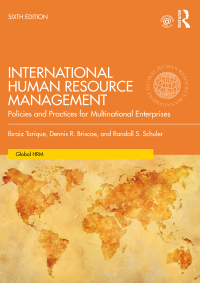OBI, the third largest DIY retailer in Europe and fourth largest in the world, operates about 668
Question:
OBI, the third largest DIY retailer in Europe and fourth largest in the world, operates about 668 stores in 13 European countries (as of late 2018), was founded in Germany in 1970, and expanded rapidly into other European markets in the 1990s and 2000s. As happens with internationalization in most retail businesses, new stores in new countries (in OBI’s case, largely in Central and Eastern Europe) typically develop largely stand-alone operations and procedures. In OBI’s case, as the firm grew very rapidly, independent and local HR practices began to present major problems.
While most of OBI’s stores are owned and operated by the company, some operate under franchise agreements. And, in some countries, such as Russia and Ukraine, OBI entered into joint ventures with local partners as a way to expand its business while maintaining full operational control. In most of these new countries and new stores, coordination with parent-company headquarters depended more on an individual manager’s willingness to network within the informal structure than on any requirement of formal corporate policies. This was especially true for human resource management practices, e.g., recruiting and staffing procedures and employee performance evaluations. To a large degree, each store developed its own way of doing things. There were several differing competency models, rating scales, and performance evaluation processes being used. And staffing activities were even more disparate.
For example, by 2008, corporate headquarters began to be concerned about the use of differing practices and the variances in approaches and, sometimes, in quality. It realized that in order to achieve economies of scale and to be able to draw upon global expertise and resources while still localizing its business practices in the different national markets, it would have to change its multidomestic approach. The company needed to create a more centralized mode of operations and become a more transnational firm.......
Case study questions
1. How did OBI capitalize on the strengths of its multidomestic strategy when shifting its structure to a transnational organization?
2. Why did OBI create “Centers of Excellence”?
3. How does shifting from a multidomestic to a transnational model affect an organization’s culture?
4. How did it affect HR?
5. Does this case provide an example of the future for IHRM?
Step by Step Answer:

International Human Resource Management Policies And Practices For Multinational Enterprises
ISBN: 9781138489493,9780429806124
6th Edition
Authors: Ibraiz Tarique , Dennis R. Briscoe , Randall S. Schuler




